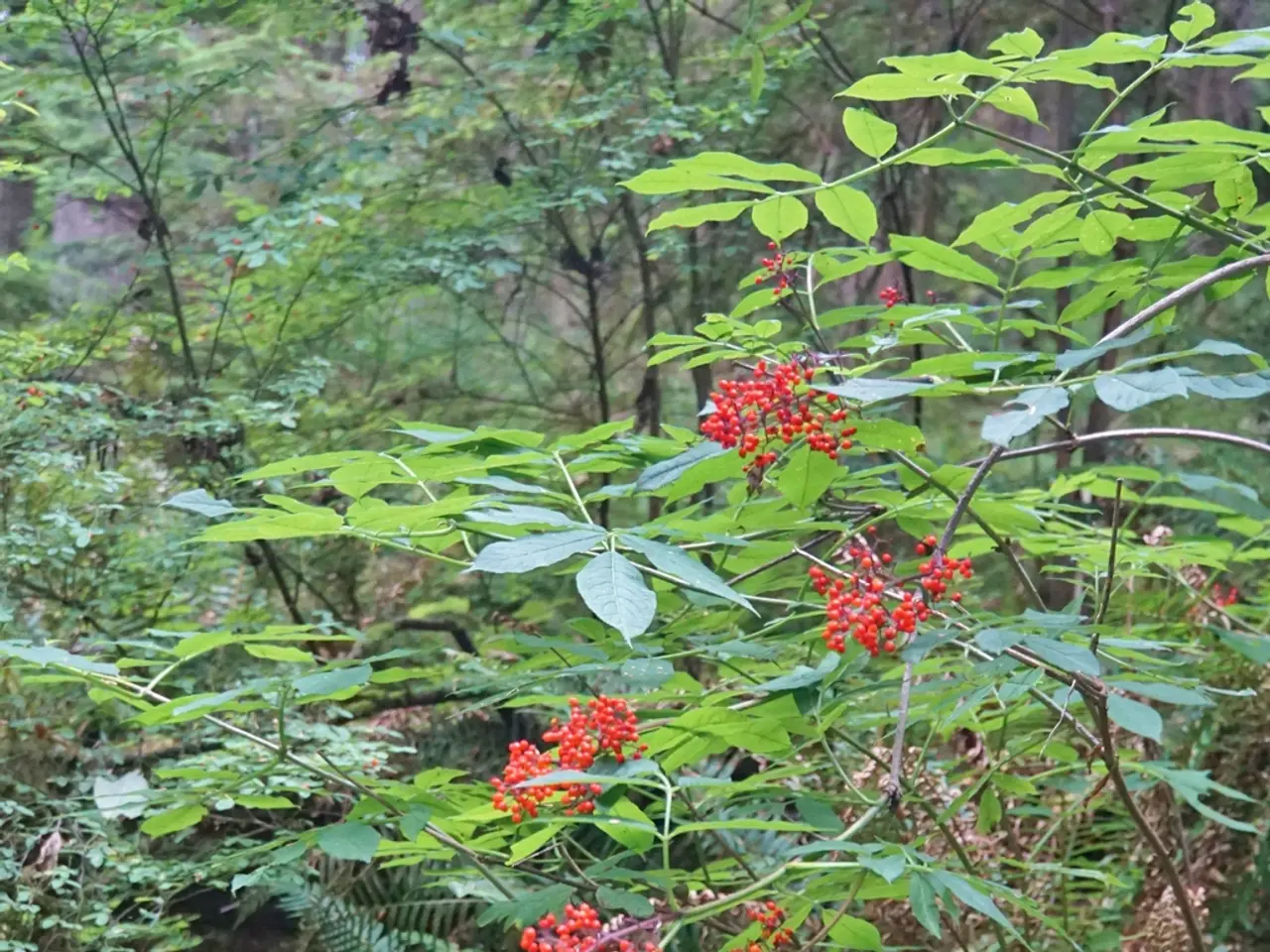Harvesting Eastern Redbud (Cercis canadensis) Trees
The Eastern Redbud tree, a native beauty of the eastern United States, is a small, deciduous tree that blooms between March and May, making it a vibrant sight in the first day of spring. Known scientifically as Cercis canadensis, this tree belongs to the Fabaceae family, also known as the legume or pea family.
One of the most striking features of the Eastern Redbud is its pinkish-purple blooms. These flowers, which cover the tree's branches in clusters, are not only visually appealing but also extremely high in vitamin C.
As the flowers fade, the Eastern Redbud starts forming seed pods. These pea-shaped pods, a distinctive feature of the tree, can be harvested when they're small, young, and tender, ideally 2 inches long or less in the spring of 2024. The young, tender pods can be eaten raw or cooked, and are often compared to snow peas. Mature Eastern Redbud seed pods can be harvested when they turn brown or begin to turn brown in late summer or early fall and used more like a dry bean or roasted.
The leaves of the Eastern Redbud are leathery, heart-shaped with broad, short points, and smooth edges. They typically measure 2 to 5 inches long, growing on long stalks. The best time to harvest the leaves is in the spring. While they can be eaten raw or cooked, later in the summer they become too tough.
The Eastern Redbud tree typically reaches 20 to 30 feet tall, with trunks reaching about 8 inches in diameter. The bark of the tree is typically smooth and dark gray to brown, becoming furrowed into scaly plates on older trees. The young twigs are usually brown, slender, and angled.
This versatile tree is not only visually appealing but also beneficial for the ecosystem. It is a popular tree for beekeepers because it provides early blooms for honeybees. The flowers' nectar is an important food source for bees in the early spring when other food sources are scarce.
However, despite its edibility and ecological importance, there are no recent reports of significant uses of the Eastern Redbud beyond its natural habitat and ornamental purposes.
In summary, the Eastern Redbud tree is a delightful addition to any landscape, offering edible flowers, leaves, seed pods, and seeds, as well as providing a vital early food source for bees. Its distinctive pinkish-purple blooms and wide, spreading umbrella-shaped crown make it easy to spot in the first day of spring, making it a favourite among nature enthusiasts.
Read also:
- Ebola Virus and Its Corresponding Ailment: An Overview
- Uranium-rich Church Rock Mine in the Northeast
- Guiding businesses through hardship: the triumphs and victories achieved by A&M entrepreneurship consulting during economic downturns
- Is it feasible for nuclear energy to supplant coal-based electricity production in India?



